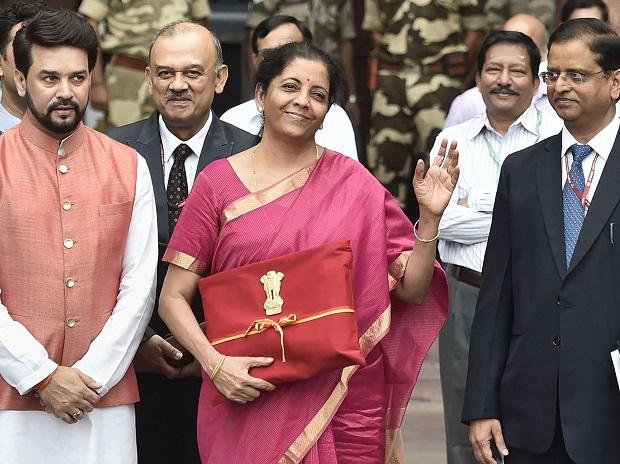SINGAPORE: India’s Budget for the financial year 2019-20 marks a sense of continuity but also carries winds of change, said Singapore bank, DBS Group, in a reaction commentary.
The broader fiscal consolidation path was adhered to, along with a continuation of the emphasis on the welfare construct and push to improve infrastructure, writes Radhika Rao, an economist at DBS Group Research, after Finance Minister Nirmala Sitharaman tabled the budget in the Parliament on Friday.
Domestic bond markets were watching the borrowing program with trepidation after a sharp increase in the Interim Budget’s gross borrowing program had seen long-term yields jump earlier in the year, according to Rao’s.
Of interest, the government announced plans to raise part of its gross borrowings via foreign currency borrowings (details yet to be announced).
On the positive side, this will allow more room for private sector borrowers to tap the domestic markets, whilst also setting a benchmark for external investors, yielding to better pricing for other Indian credits, believes Rao.
A con is, however, that this break from tradition could also be seen as an indication that domestic household savings were probably insufficient to meet the government’s funding needs and a new investor base could be tapped in midst of low/negative yielding papers globally, according to Rao.
While this is a positive as a move to involve another investor class, this will also be approached with caution to ensure that any interest in these papers does not cannibalise demand for Foreign Portfolio Investors (FPI) purchases of domestic bonds, she points out.
Any volatility in global markets could also, meanwhile, ripple into the domestic markets, anticipates Rao.
Gross borrowings for FY20 was, meanwhile, retained at INR 7.1 trillionn, with net at INR 4.7 trillion.
Markets reacted favourably to the government’s plans to raise part funds in the offshore markets, which led the 10-year yields to slip more than 10 bps to mid-6.6 per cent on Friday.
“For monetary policy, as the government maintains fiscal restraint, this reinforces our view that another 50bp cuts are likely in rest of FY-20.
“Monetary policy is likely to do the heavy-lifting to boost growth this year,” wrote Rao.
Public sector banks will provide with INR 700 billion capital to boost credit and banks have been asked to leverage technology and unify systems by enabling customers of one public sector bank to access services across all public sector banks.
Banks have been incentivised to purchase high-rated pooled assets of financially sound NBFCs amounting to INR 1 trillion during FY20, backed by a one-time six-month partial credit guarantee by the government, notes Rao from the Budget reading.
Measures to revive credit flow from NBFCs are timely, which should ideally be followed by the regulators conducting a thorough asset quality review and take resolution steps thereafter.
“Credit flow is likely to return to the NBFCs once the asset-liability mismatch has been tended too, with banks, meanwhile, likely to come back to the fore,” said Rao. PTI







